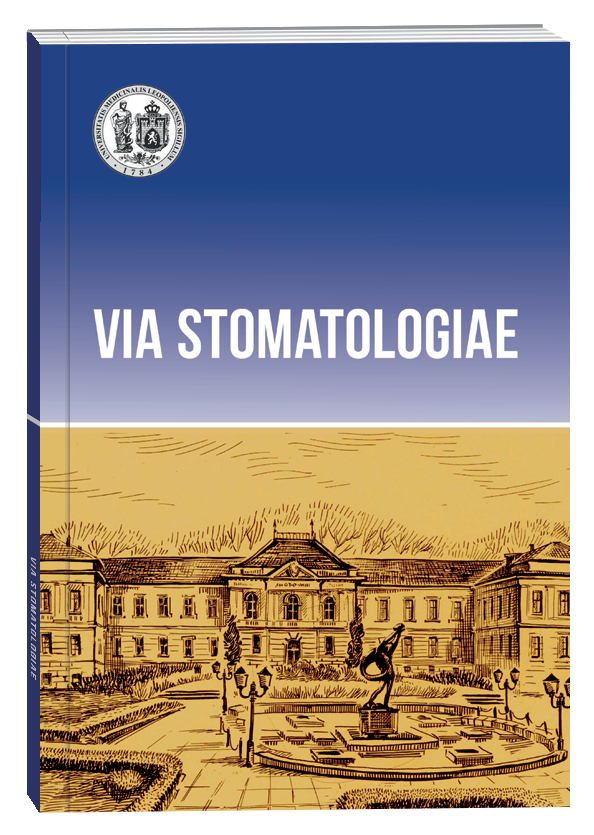STRATEGIES FOR ORAL CARE IN PATIENTS WITH EPIDERMOLYSIS BULLOSA
DOI:
https://doi.org/10.32782/3041-1394.2024-3.1Keywords:
epidermolysis bullosa, oral cavity, prevention, hygiene, childrenAbstract
Introduction. Rare (orphan) diseases are traditionally defined as diseases that affect very few people but can be associated with inadequate treatment, chronic exhaustion, and adverse health outcomes. One of the most severe hereditary dermatoses is epidermolysis bullosa (EB). In addition to skin lesions, depending on the form of EB, it has pronounced symptoms in the oral cavity. The development and progression of these symptoms are influenced not only by general factors but also by local factors, primarily poor oral hygiene due to the formation of blisters in and around the oral cavity, scarring contractures around the mouth, microstomia, reduced tongue mobility, and insufficient hand motor skills. The aim of the study. Based on personal research and analysis of literature sources, to systematize recommendations for oral care in patients with epidermolysis bullosa. Research materials and methods. Two clinical cases of patients with the dystrophic form of EB are presented. In one case, the diagnosis of “Exacerbation of chronic granulating periodontitis was established”; in the other, “Chronic fibrous pulpitis”. After achieving a satisfactory degree of mouth opening (clinical case № 1 – myogymnastics, clinical case № 2 – surgical intervention), treatment was carried out for the exacerbation of chronic granulating periodontitis of tooth 23 (clinical case № 1) and the extraction of teeth 41, 42, 43, 44 (clinical case № 2). Results. As a result of personal research and analysis of literature sources, recommendations for oral care were systematized, aimed at preventing the development of pathological changes in the oral cavity. Conclusions. Oral care is an effective and necessary element of the prevention of dental diseases in patients with EB, as it helps not only to prevent the development of pathological changes in the oral cavity but also to improve the general well-being and quality of life of such patients.
References
Tong N. Priority Diseases and Reasons for Inclusion. Priority Medicines for Europe and the World 2013 Update. Geneva, Switzerland : World Health Organization Publisher, 2013. P. 158–160.
Dudding T. Orphan diseases: challenges, costs and opportunities – this is why you must do it: a voice for families. Pathology. 2013. Vol. 45 (Suppl. 1). P. S31. DOI:10.1097/01.PAT.0000426801.32999.8f.
The landscape for rare diseases in 2024. The Lancet Global Health. 2024. Vol. 12 (3), March 2024. е341. URL: https://www.thelancet.com/action/showPdf?pii=S2214-109X%2824%2900056-1.
Котвіцька А.А., Черкашина А.В. Дослідження сучасного стану державного регулювання медико-фармацевтичного забезпечення хворих на орфанні захворювання в Україні. Соціальна фармація в охороні здоров’я. 2016. Т. 2. № 1. С. 29–36.
Про забезпечення розширеного неонатального скринінгу в Україні : наказ № 2142 від 01.19.2021 р. URL: https://zakon.rada.gov.ua/rada/show/z1403-21#Text.
Fine J.D., Hintner H. Life with Epidermolysis bullosa. Etiology, Multidisciplinary Care and Therapy. Wien : Springer, 2009. 338 р.
Clinical and Microbiologic Study of Periodontitis Associated with Kindler Syndrome / C.B. Wiebe et al. J Periodontol. 2003. Vol. 74. P. 25–31.
Wright J.T. Oral manifestations in the epidermolysis bullosa spectrum. Dermatol Clin. 2010 Jan. Vol. 28 (1). P. 159–164. DOI: 10.1016/j.det.2009.10.022.
Бульозний епідермоліз: клінічне спостереження та практичні аспекти лікування / А.Г. Бабінцева та ін. Актуальні проблеми сучасної медицини : вісник Української медичної стоматологічної академії. 2020. Т. 20. Вип. 3 (71). С. 9–13. DOI: 10.31718/2077-1096.20.3.9.
Epidermolysis Bullosa in dentistry: Report of three cases and review of the literature / O. Arpağ et al. Journal of International Dental and Medical Research. 2015. Vol. 8. P. 133–139.
Clinical practice guidelines: Oral health care for children and adults living with epidermolysis bullosa / S. Krämer et al. Spec Care in Dentistry. 2020. Vol. 40. P. 3–81. DOI: 10.1111/scd.12511.
Higher Dental Caries Prevalence and Its Association with Dietary Habits and Physical Limitation in Epidermolysis Bullosa Patients: A Case Control Study / S.C. Leal et al. J Contemp Dent Pract. 2016, Mar 1. Vol. 17 (3). P. 211–216. DOI: 10.5005/jp-journals-10024-1829.
Evaluation of Clinical and Oral Findings in Patients with Epidermolysis bullosa. Medicina / Y. Yavuz et al. 2023. Vol. 59 (7). P. 1185. DOI: 10.3390/medicina59071185.
Inherited epidermolysis bullosa: An update and suggested dental care considerations / J.F. Feijoo et al. The Journal of the American Dental Association. 2011. Vol. 142 (9). P. 1017–1025.
Oral Alterations in Heritable Epidermolysis Bullosa: A Clinical Study and Literature Review / A. Polizzi et al. Biomed Res Int. 2022. P. 6493156. DOI: 10.1155/2022/6493156.
Профілактика захворювань порожнини рота в дітей, хворих на бульозний епідермоліз: опис випадку та огляд літератури / В.В. Іванчишин та ін. Сучасна педіатрія. Україна. 2023. № 3 (131). С. 126–133. DOI: 10.15574/SP.2023.131.126.







